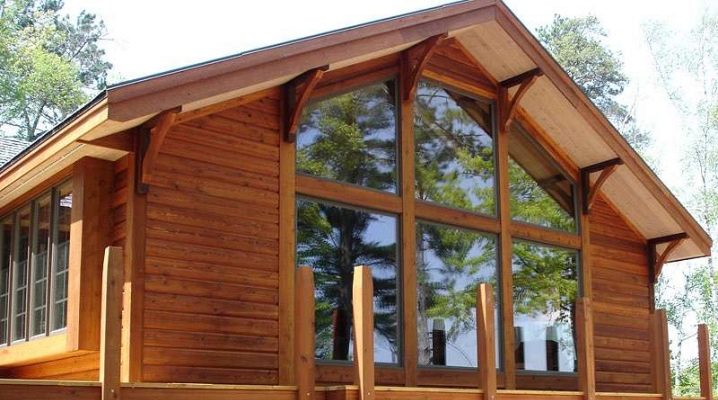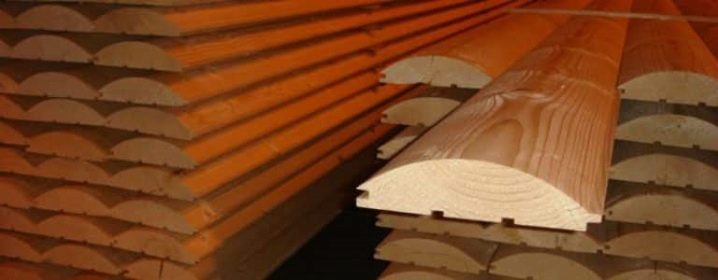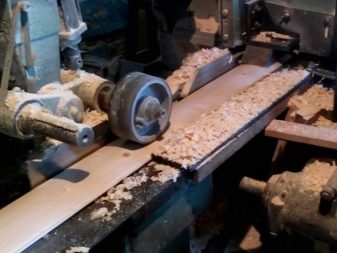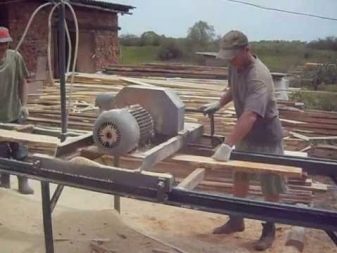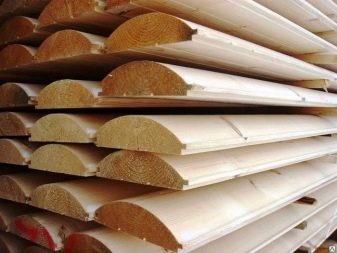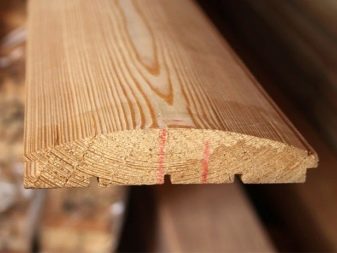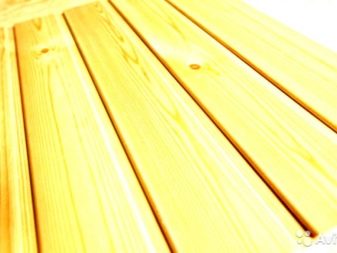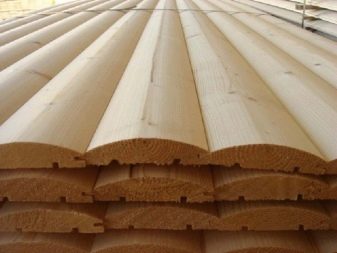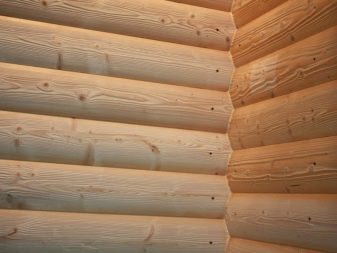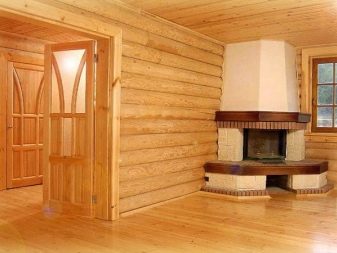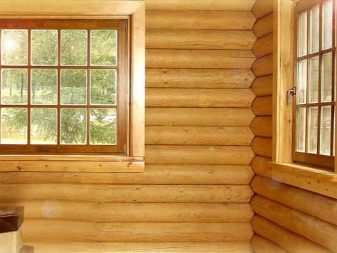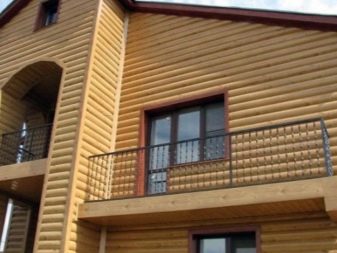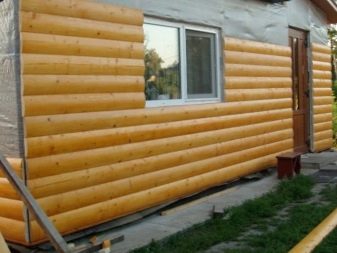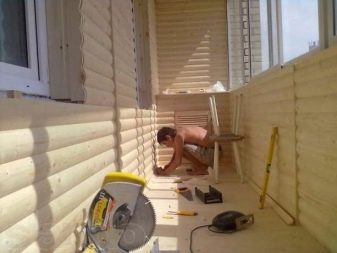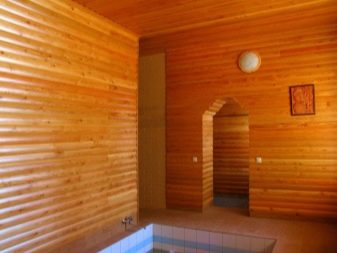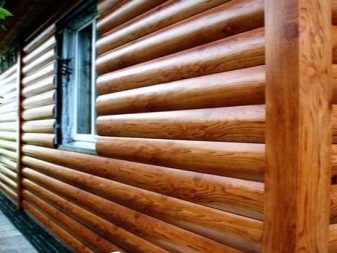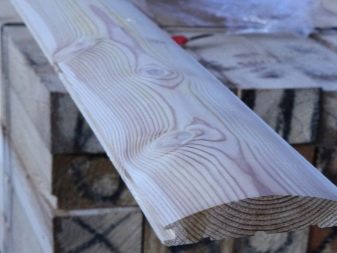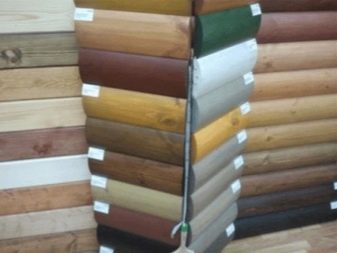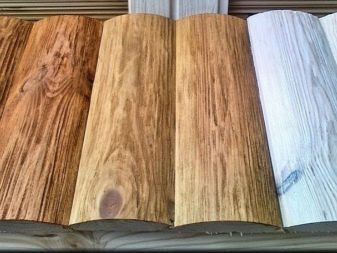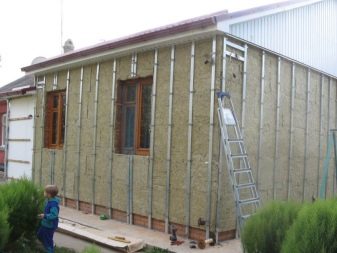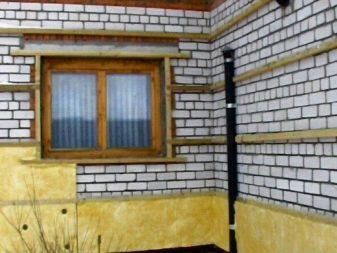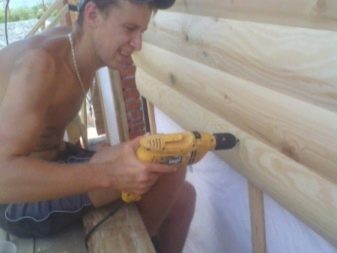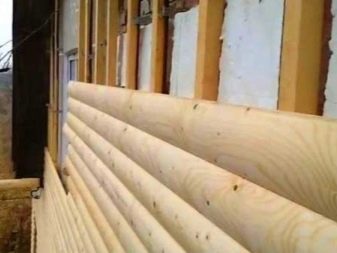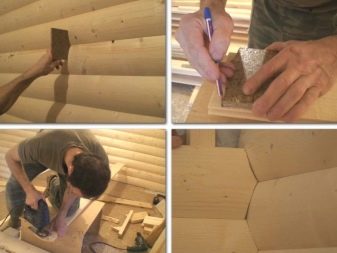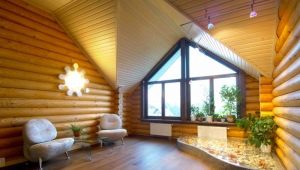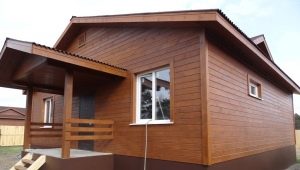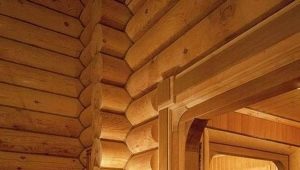Larch block house: selection and characteristics
It is possible to combine an economic reason and aesthetic satisfaction with the help of cladding technology block house, which is able to make a real wooden frame out of the plastered building.
In the construction market there are a lot of proposals in the direction of "wall decoration" from different versions of siding, including wood-painted metal and vinyl samples. But the wooden facade, which is classified as ventilated or "breathing", ranks first in the finishing ratings. At the same time, a high-quality log house is usually associated with the famous Siberian larch.
Manufacturing technology of larch timber
The wooden panel of the block house technology is a “pumped” version of the famous “lining”. The main difference is the choice of high-quality full-bodied trunks and cutting out of it using the square-in-circle method of massive, rounded at the top and even from the bottom of the blanks.Folded with a locking method and fitted end-to-end, they exactly mimic a wall of high-grade logs.
Before cutting, the trunks are dried, keeping no more than 12% of moisture, which is indicated on the label when selling. After removing the excess liquid from the wood, the logs are cleaned of the upper layer - the bark and sapwood, which gave the growing plant nutrition from the roots, but will be the accumulator of infection and pests when used as a finishing material. Mature Siberian larch has about 1-2 cm of sapwood, which is almost 3 times less than that of other coniferous representatives. The cleared and rounded log will keep the color and will not turn blue.
On the half-cut blanks, the machine begins to form specialized protrusions and indentations. Along the lower flat surface, furrows are cut out - ventilation slots that ensure uniform air circulation to the inner side of the casing. At the ends, the simplest locks are formed: on the one hand, it is a groove (groove), on the other, a protrusion (tenon), which exactly fit each other in size, and tightly interlock the elements “under the log”.
Larch products have a natural high protection against bark beetles due to the resin compositiontherefore, their treatment with antiseptic is used only as an additional insurance. Coloring with colored paint is used very rarely, since the natural structure of wood is very expressive. Annual rings of the barrel are clearly visible on the details with a side cut. They have a natural orange color. Some customers order impregnation with stain to visually enhance the texture of the cut.
All the details of larch under the block-house are made of high-quality raw materials that can withstand the harsh climatic conditions for a long time. This material is in the group of very resistant breeds according to the standard EH 350-2, operating in Europe since 1994.
Characteristics of varieties: quality and cost
Larch lumber is classified into several categories.
- Extra - the highest quality of a tree, without knots and visual defects. For the manufacture of such a level of finishing logs are selected manually and carefully checked. Only healthy specimens are selected, no cracks are allowed.The cost of such a product exceeds the price category more than 2 times. Large volumes are ordered, as a rule, when building a luxury housing.
- Class A - excellent quality of wood, tested for the absence of malformations, with a strict selection of the number of young knots with a maximum diameter of 15 mm. The permissible rate is not more than one unit per linear meter. Small cracks can be found only at the ends of the product. Pitch pockets may be allowed as an exception. It is the most common option for covering private residential cottages.
- Class B - It is allowed to have one or two healthy knots with a diameter of up to 20 mm per linear meter. The category also allows the presence of small (up to 30 mm) cracks on the front surface and no more than three wormholes, which are insulated with wood varnish. Resin pockets may be present in an amount of not more than one per strip. Such products are purchased mainly for country houses.
- Class C - undemanding to quality category. In this class, any number of knots, unwound wormholes and resin pockets are allowed. Wood may have abnormal development, noticeable in color, pattern and uneven surface. The front side may contain cracks up to 50 mm in diameter.This option is used for low-cost suburban buildings (gazebos, sheds, technical buildings), but their lifespan will initially be several times smaller than that of higher-quality counterparts.
There is a GOST 2140, which is used to verify compliance with the class and the stated price. Some manufacturers produce products labeled "classic" and "economy", which can be assessed, referring to the standard.
The basic characteristics for the facade cladding include several parameters.
- The resistance of wood to temperature and humidity. According to this criterion, larch is out of competition: its strength is often compared with oak, which is not used for exterior decoration due to fading and high cost.
- The service life of a natural material. As an example of the long-term ministry of larch, it is enough to recall the famous piles, which not only held the berths of Venice for several centuries, but also are in the water. In addition, Russia has preserved quite a few centuries-old log cabins, in which people still live.
- Heat shielding and sound insulation - as a critical factor in middle and northern latitudes. The density of the larch structure provides not only the heat capacity exceeding the species of other trees, but also the uniform distribution of heat from the plating around the room of the house.Stone density of the material has high sound insulation.
- Weight and load on the foundation of the house. Due to the solidity of the structure, the weight of the facade of larch is heavier than that of other less durable rocks. But the flip side of this feature will be the actual creation of the second independent wall of the dwelling, which will become a shield in case of external natural cataclysms.
- The cost of materials, components and installation. Larch block house is more expensive than the same lining with softer and simpler types of wood. This factor is leveled by almost a lifetime. The facts of preservation of larch buildings for more than 300 years are widely known, including due to the presence of gum in the resin. Taking into account additional modern protective coatings, the owner’s great-grandchildren can live in a house with such a facade.
High-quality components, the presence of a simple experience in home repair and ease of installation will allow the owner to save on the service of assembly and plating. You can carry out all the steps from selection to installation by yourself, if you follow simple rules and instructions.
As a result, the important characteristics of reliability and durability, including the always demanded national style, have been confirmed and will become an economically correct decision.
How to choose?
Before purchasing panels made of larch, it is necessary to thoroughly check all the proposed construction details and compare them with the declared quality and price. In the case of detection of elements of rotting, large cracks or resin pockets that threaten the integrity of the board, it is better to require a replacement upon purchase. It is important to test the ease of fastening the lock (spike in the groove). It is safer to purchase material from the official seller, who not only can show a certificate of quality, but also give recommendations on installation and maintenance. Perhaps the surface will require additional treatment with a protective coating in 5-7 years, or the documents will confirm the long-term nature of the finished product. All slats must be packed in polyethylene.
The panels are offered in two versions - for interior and exterior. The main difference lies in the format of the board, as the smaller size and thickness is used indoors.
The size range is large - from 2 to 6 meters in length and from 11.5 to 22.5 cm in width. Board thickness can also vary from 19 to 48 mm. Different lengths and widths of the board are used for exterior and interior decoration.However, there are no strict canons, and the owner can choose any convenient sizes, as the manufacturing technology for them, as a rule, is the same.
The choice of color is more aesthetic preference, since in 12 shades of larch (from white to almost orange) there is no connection with the quality of the wood itself.
After the purchase, it is important to provide the boards with adaptation to the new conditions. To do this, you need to unpack the components and decompose them for 4-5 days.
If this material is for interior decoration, then it would be more appropriate to sustain it indoors. If the boards are front, then storage is better to organize under a canopy.
Self-assembly: important details
At the time, while the new lining "gets used" to the microclimate, it is worth preparing the walls for installation. All old coatings that can preserve fungus and microorganisms must be removed. Walls after cleaning is better to smear with antiseptic. Process wooden parts of the crates with a protective coating to avoid rotting. Internal damage to the lathing can cause skewing of the facade, leading to disassembly and reassembly.
Regardless of the option - to install heat-shielding materials under the external wall or to mount on an already insulated and plastered surface. The use of a vapor-absorbing coating should be mandatory. Like any organic "breathable" product, a wooden facade will produce some amount of moisture. Its contact with thermal insulation or other materials will gradually destroy the integrity of the wall layers.
The crate is built vertically, since the panels for the block-house will have a horizontal orientation.
In the case of laying in the sheathing of insulation, it is necessary to control the fit density and the same level of wooden pillar and thermal insulation.
Boards are installed with a tongue up. Between the crate and the new skin should be left a small (about 50 mm) gap for ventilation. If the block house panels are mounted on an internal wooden wall treated with an antiseptic, then it is permissible to fasten the new panels tightly, without gaps.
An important step will be the selection of correct mounts. The weight and density of the second wall will be quite solid, so it’s better not to count on the old-fashioned methods of fastening with carnations, especially hammering nails into stone larch is a thankless task.The correct solution would be to fasten the clamps to be inserted into the ventilation slots. It will also enable easy disassembly for revision or replacement of the item. But the main reason for working with the cleats will be to preserve the structure of the board with all layers of factory coating.
And finally a nice bonus. The new plating material of the Siberian tree will bring not only a pleasant smell, but also a constant selection of resin with coniferous extract in microscopic quantities. Such unobtrusive natural therapy will benefit all members of the family living in the house “wrapped” in larch.
For information on how to properly and properly install a block house, see the following video.
